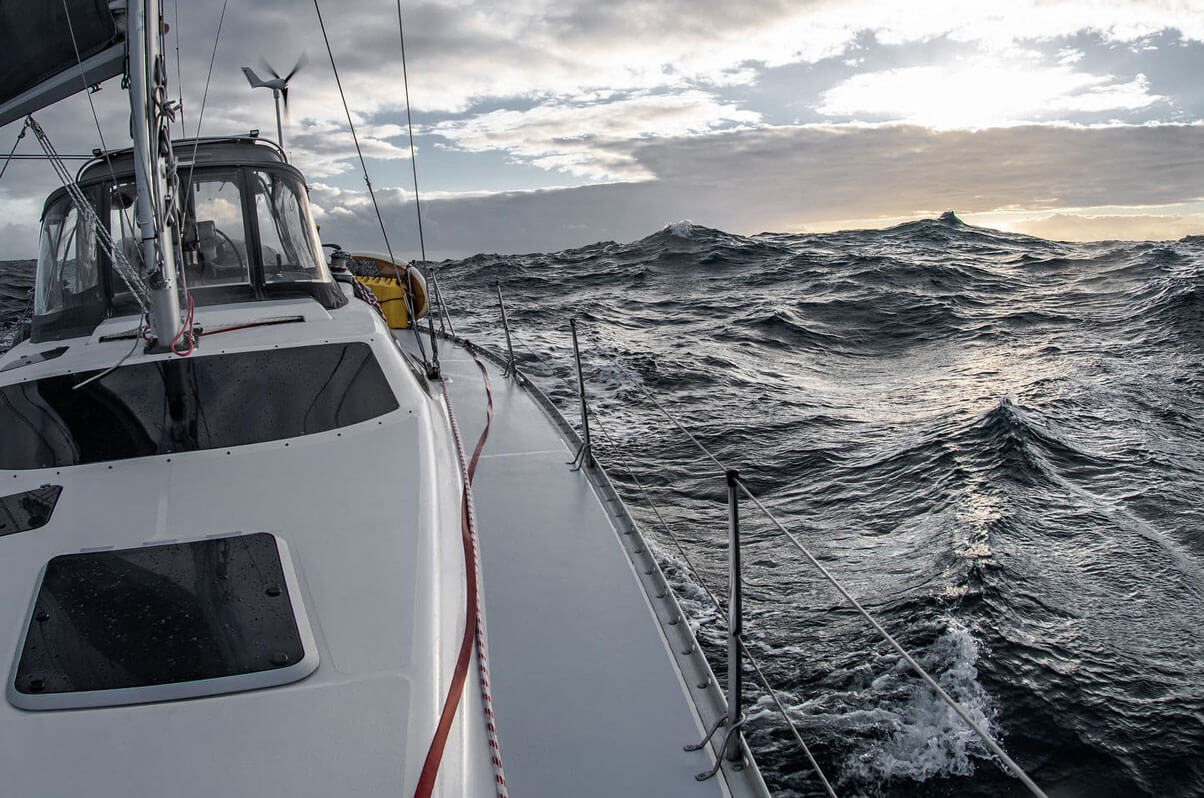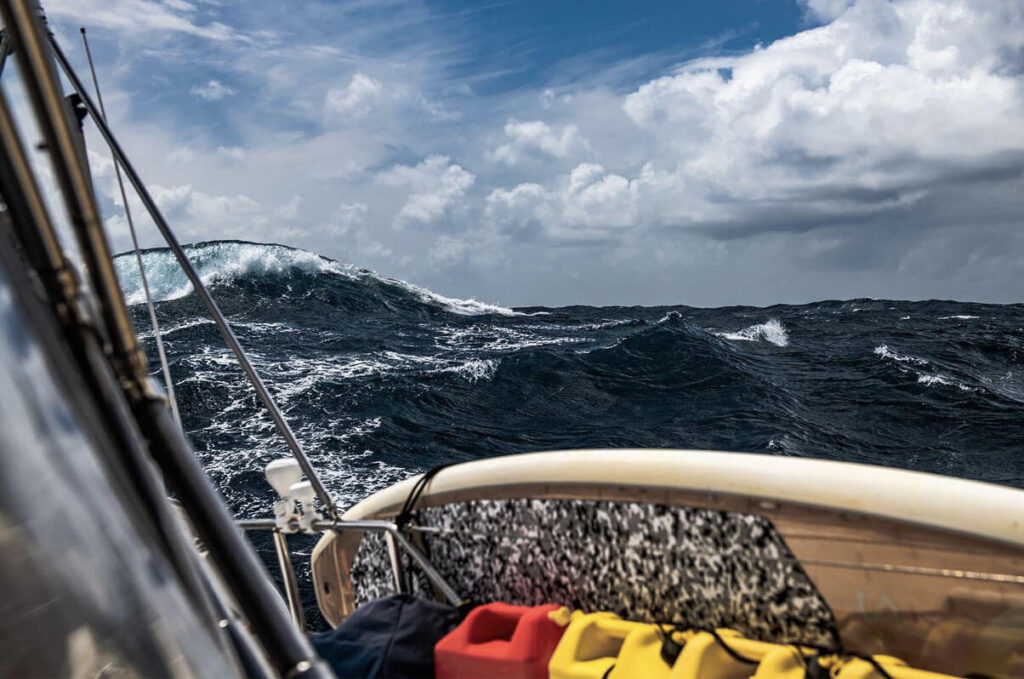
As you’d expect after five long months marina line, we were eager to get back out on anchor. Dock itch is real! There is nothing better than being in a remote anchorage and we were looking forward to heading south. As much as we were going to miss the beautiful north, we were so very excited to get our butts back into some warmer waters. Even though there was a lack of sun, the northern areas have become my favourite cruising grounds, I guess you can’t have it all.
However, we still had one passage that was lingering over our heads since arriving in Ireland almost a year ago and that’s the Bay of Biscay. A notoriously rough patch of ocean with an unforgiving coastline and no real safe haven to duck in for shelter in the event of inclement weather. If we weren’t so eager to get south and had time to wait for the better and calmer winds later in Spring and Summer, it wouldn’t have been so much of a worry. We were trying to line up which countries we could visit while also planning during which months we had to get a move on. As Canadians, we are only permitted 90 days in an EU Shengen states within a 180 day period. After 90 days was up, we’d have to jump out of the Schengen area for a minimum of 180 days. That makes working with the seasons and route planning on a sailboat a nightmare. If you didn’t already know, a cruiser’s plans are always written in sand at low tide!
From what we gathered, there are a few ways to cross the Bay of Biscay and the shortest being from either France or Isles of Scilly in the UK. If you aimed yourself right towards the middle of the bay, the entire passage could be as short as three days, of course having an ideal weather window. The wind predominately blows from the southwest early in the year and can change quickly. Once the wind changes, it will start to shift counter-clockwise and that’s when your window opens. What makes it a dangerous passage is that there is a continental shelf that goes from 3000+ feet to 300 feet in depth within a short distance. Around the shelf on either side of the bay and even in clam conditions, it can create a nasty sea state. Couple that with heavy winds and you’re in for a wild ride.

The safest, well usually the safest route is the longer route. From the bottom of Ireland headed on a southwesterly direction until you’ve passed the shelf and are now in open ocean…well out of the bay, aiming yourself to make land all on the west coast of Northern Spain. This will keep you in safer waters and away from the Bay and the shelf.
The weather window looked great and we headed off from the most southwest point in Ireland. Our intended landfall was in Vigo, Spain. One day after we left, the winds shifted and returned from the south. This resulted in our need to sail nearly 200 nautical miles east before we were able to head southwest again. This was a real pain as that it put us in an unfavourable location in the Bay of Biscay for the next 250 nautical miles.
We ended up having to make landfall 130 nautical miles further east than expected in La Coruna, Spain. Fortunately, because we left from the furthest southwest point of Ireland, we had an extra couple hundred nautical miles before we would have been forced to make landfall somewhere in France, which was not the plan. Thankfully, it all worked out and we even had the opportunity to visit a few extra worthwhile stops in Northern Spain before eventually arriving at Vigo.
For now, fair winds and calm seas, fellow sailors!
Travis – Sailing Jibsea
Instagram: @sailingjibsea
Facebook: Sailing Jibsea
